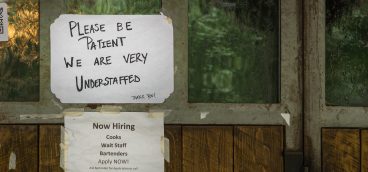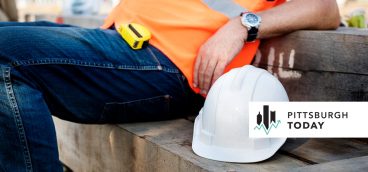Post-Pandemic Education Survey

More than a year after COVID-19 disrupted the education of 115,000 elementary, middle and high school students in Allegheny County, residents are concerned that it has impeded their progress and favor rethinking the way public schools go about teaching them.
According to the results of a new survey, schools generally earn passing grades for the way they handled the abrupt closing of schools, the shift to remote learning and other measures made in response to the pandemic, even though some have struggled to adapt.
The lingering pandemic also appears to have bolstered already strong support for teachers, after-school programs and spending more public dollars to give students access to computers and other educational technologies. And it has led more residents to doubt the quality of a home-schooled education.
More than 1,100 county residents were surveyed in July by Pittsburgh Today and the University Center for Social and Urban Research (UCSUR) at the University of Pittsburgh. They were identified from the UCSUR Research Registry, and data were adjusted to make the sample representative of Allegheny County’s demographic characteristics.
The online survey asked for their views on pandemic-related issues ranging from remote learning to the tumultuous year’s impact on students. Questions from an October 2019 survey were also included to see how pre-COVID views on other educational issues and policies compared with the views residents shared 16 months into the pandemic.
After the coronavirus began its rapid spread in March 2020, schools closed, and strategies for moving education into the home — most devised on the fly — were complicated by inexperience and inequities in student access to the technologies and internet connections that remote learning demanded. Even the partial reopening of classrooms in the fall was unfamiliar territory.
The risk students face because of such disruptions is not lost on Allegheny County residents. More than 64 percent are concerned that students will fall behind in their studies as a result. Less than 9 percent are “not too concerned” about that, while only 2 percent are not concerned at all.
Concern is more widespread among Black residents, with nearly 82 percent being very or somewhat worried that students will fall behind, compared to 62 percent of whites.
Residents are generally satisfied with their local school district’s effort to adjust to the pandemic, although 38 percent say they’re not familiar enough with those efforts to offer an opinion.
Among those who are familiar, 42 percent overall are either very or somewhat satisfied with how their schools are dealing with the adjustment, while 20 percent are less than satisfied. But whether residents live in the City of Pittsburgh or the suburbs, their race and income level tend to influence those views.
Race, income and geography
Satisfaction is strongest in the suburbs, where nearly 51 percent of residents who offered an opinion are satisfied with how local schools have dealt with the pandemic. Less than 37 percent of city residents were satisfied with how schools dealt with educating students under COVID restrictions.
The higher their income, the more likely residents are to say schools are doing a satisfactory job. Only 36 percent of those earning less than $25,000 a year are satisfied, for example, while more than half of residents making $100,000 or more rate their local school’s pandemic performance as satisfactory.
The pandemic seems to have kindled support for turning to more flexible teaching models that include remote learning — even when few residents are convinced remote learning is as effective as being taught in the classroom.
Public school districts refined their teaching strategies throughout the pandemic, moving from relying exclusively on remote learning to adopting hybrid models that paired a few days in the classroom each week with learning remotely from home.
If they had their way, 29 percent of county residents overall would stick with tradition and have their schools only teach students in the classroom.
Sentiment for classroom-only instruction is strongest in the suburbs, where 35 percent of residents favor it compared to 25 percent in the city. Preference for only in-person classroom instruction tends to rise with the income of residents. Nearly 47 percent of those earning $75,000 to just under $100,000 prefer only teaching students in person — a rate twice as high as what is seen among residents with incomes under $25,000 and among those earning $50,000–$74,999.
More than 59 percent of county residents overall feel schools should offer both hybrid and remote options to students. Offering both was slightly more popular among city residents than suburban residents. People with the lowest incomes are more likely to advocate for the dual models than those in the highest bracket.
But the widest differences are seen among races, with Blacks favoring a menu that offers both remote and hybrid learning by an 82-percent-to-56-percent margin over whites.
Neither model draws much support on its own. Relying on a hybrid model alone is favored by less than 10 percent of county residents overall. And less than 2 percent favor only teaching students remotely.
Their reluctance to embrace remote learning is not surprising. They’re skeptical of the quality of education it offers. Only 5 percent of county residents overall feel students get the same quality of education as being taught in the classroom.
Nearly 61 percent of residents overall feel Black and white students get an education of equal quality. That’s slightly more than thought so before the pandemic. But the overall numbers mask a vast difference of opinion among races.
Only 18 percent of Black residents think Black students get the same quality education as white students. Nearly 79 percent think the education Black students get is worse. But 66 percent of white residents think the quality of education is equal across races. Only 31 percent of whites think the education offered Black students is inferior.
And City of Pittsburgh residents are more likely than suburban residents to feel Black students get a lower-quality education than white students by a 47-percent-to-22-percent margin.
Home as a school
Allegheny County residents didn’t hold the quality of a home -school education in high regard before COVID swept in. The pandemic, during which most students spent much of the year at home, only soured their views more.
More than 55 percent feel children schooled at home get an inferior education. That’s a bit more than in 2019, when 50 percent felt home schooling was worse. Less than 32 percent of residents overall think the quality of a home-school education is the same as what students get when taught in a traditional classroom.
Black residents are about twice as likely as whites to believe home school is better, although less than 22 percent think that’s the case. And wider skepticism of its quality is seen in the city, where 58 percent of residents think students get a worse education when they are home schooled.
Child care shift
Child care choices have shifted somewhat when compared to choices made before the pandemic, the survey suggests. Among those who use child care, 27 percent rely on family as caregivers, down from more than 35 percent in 2019. Nearly 57 percent take their children to professional child care facilities, which is something only 37 percent did before the pandemic.
Black parents are nearly five times more likely to rely on family for child care, while white parents largely rely on professional child care centers — a trend the pandemic hasn’t changed.
Tech support
Support for schools, spending more money on computers and other technology was high before the pandemic. And it grew slightly after schools leaned heavily on technology to teach from a distance when COVID restricted gathering in traditional classrooms. Some 83 percent of residents overall favor spending more on technology to help students compared to less than 80 percent in the months before COVID. Spending more on tech is most popular among Blacks, 95 percent of whom favor doing so.
The pandemic did nothing to dampen support for expanding after-school programs. Nearly 87 percent of residents overall favor spending more on them, a slightly greater level of support than in 2019. Blacks more than whites favor boosting spending by a 96-percent-to-85-percent margin.
And when asked what they’d cut in school budgets to save money, only 15 percent of residents overall would trim after-school programs. Before COVID, more than 30 percent were willing to cut them.
But the pandemic failed to rally support for extending the length of the school day or year — an option that education officials have considered to offset the risk the pandemic poses to student progress. It wasn’t a popular idea before COVID, when only 46 percent of residents favored spending money on a longer school day or year. In July, support had slipped to 41 percent.
Teacher appreciation
The value Allegheny County residents place in teachers and administrators at their local schools appears to have risen during the pandemic.
Regardless of income, race or whether they lived in the city or suburbs, residents overwhelming reject cutting school budgets at the expense of the administrators and teachers. Support was strong before COVID. Only 22 percent of residents overall favored cutting teachers and administrators to save money in 2019. But 16 months into the pandemic, making such cuts was favored by only 7 percent.















